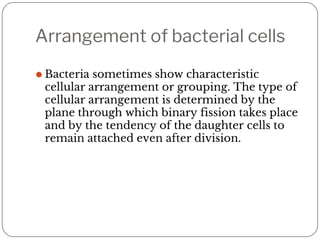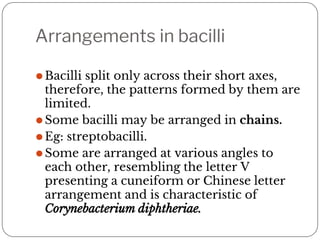This document discusses the morphology and structure of bacteria. It begins by introducing bacteria and their size. It then classifies bacteria based on their shape, including cocci, bacilli, coccobacilli, vibrio, spirilla, and spirochete. The document describes the arrangement of bacterial cells and different morphologies seen in cocci and bacilli. It provides details on the anatomy of the bacterial cell, including the cell wall, cell membrane, cytoplasm, ribosomes, nucleoid, and cellular appendages like flagella, pili, capsules, and endospores. It discusses the structure and functions of these various bacterial cell components.









































